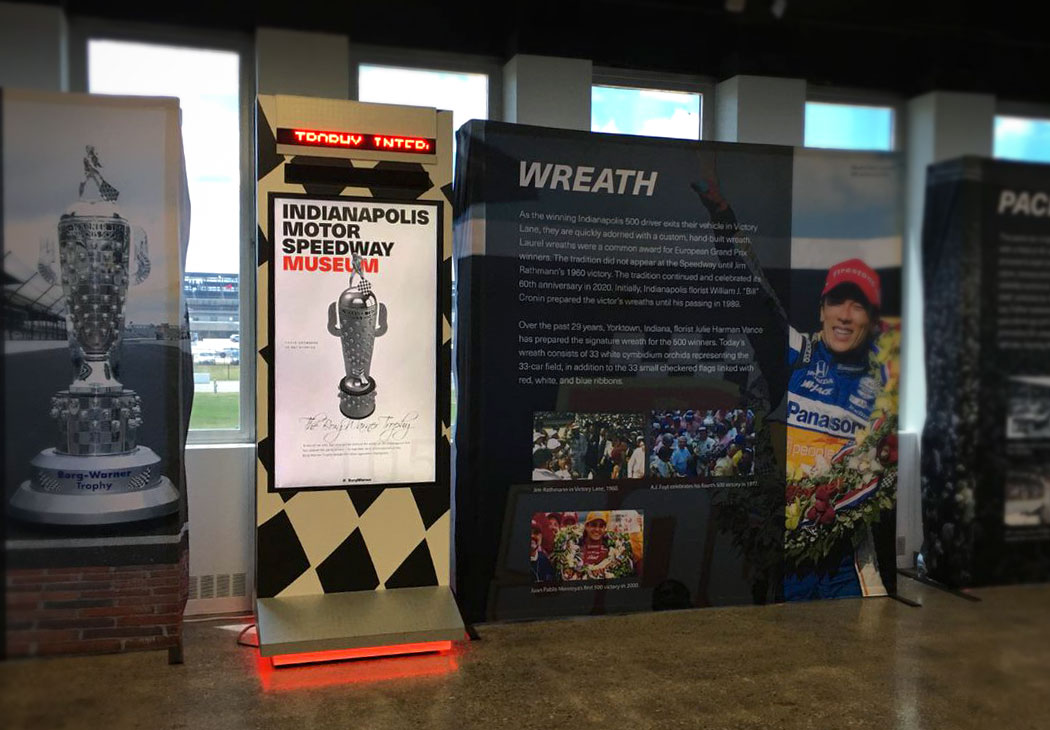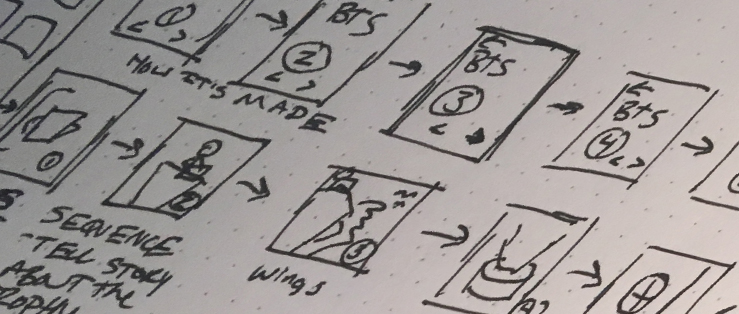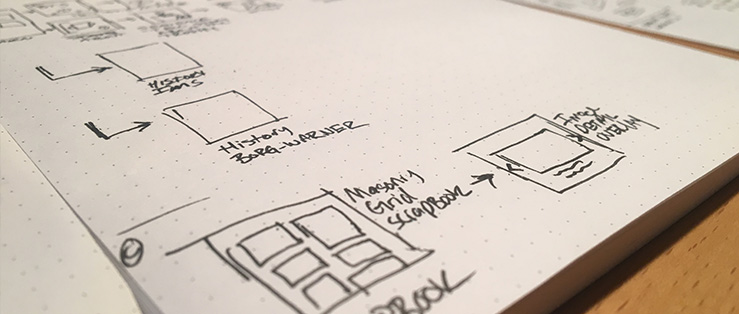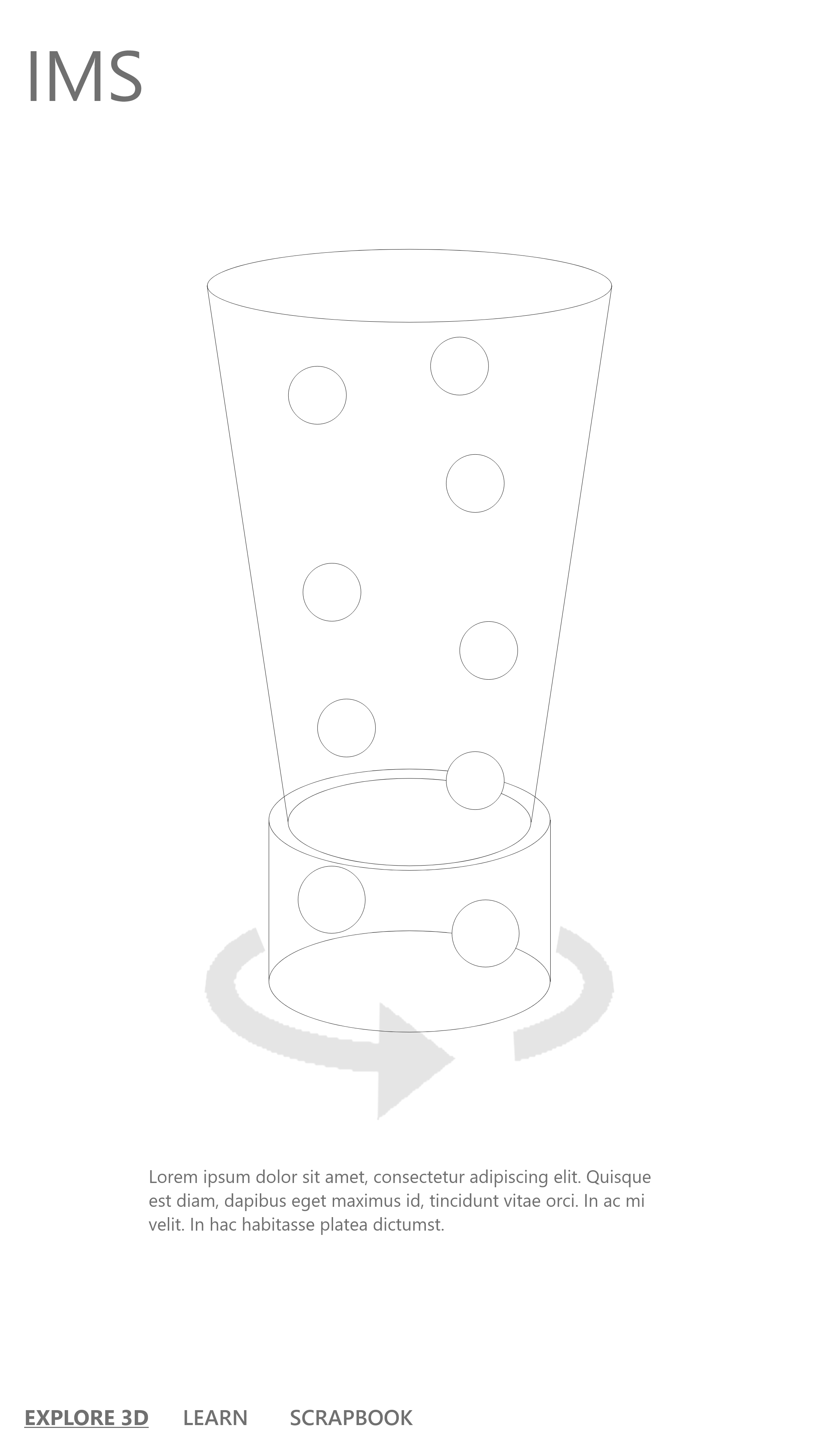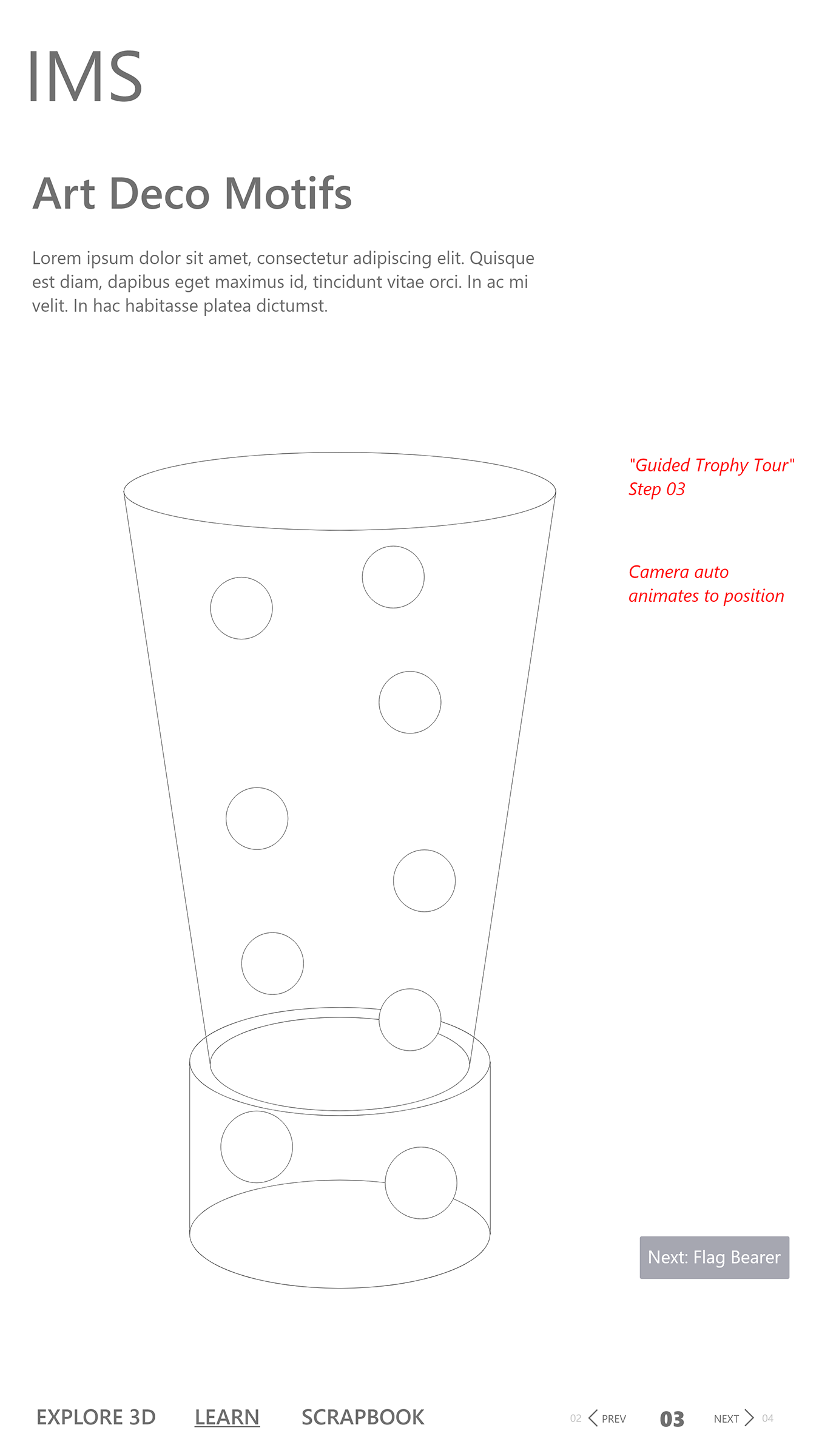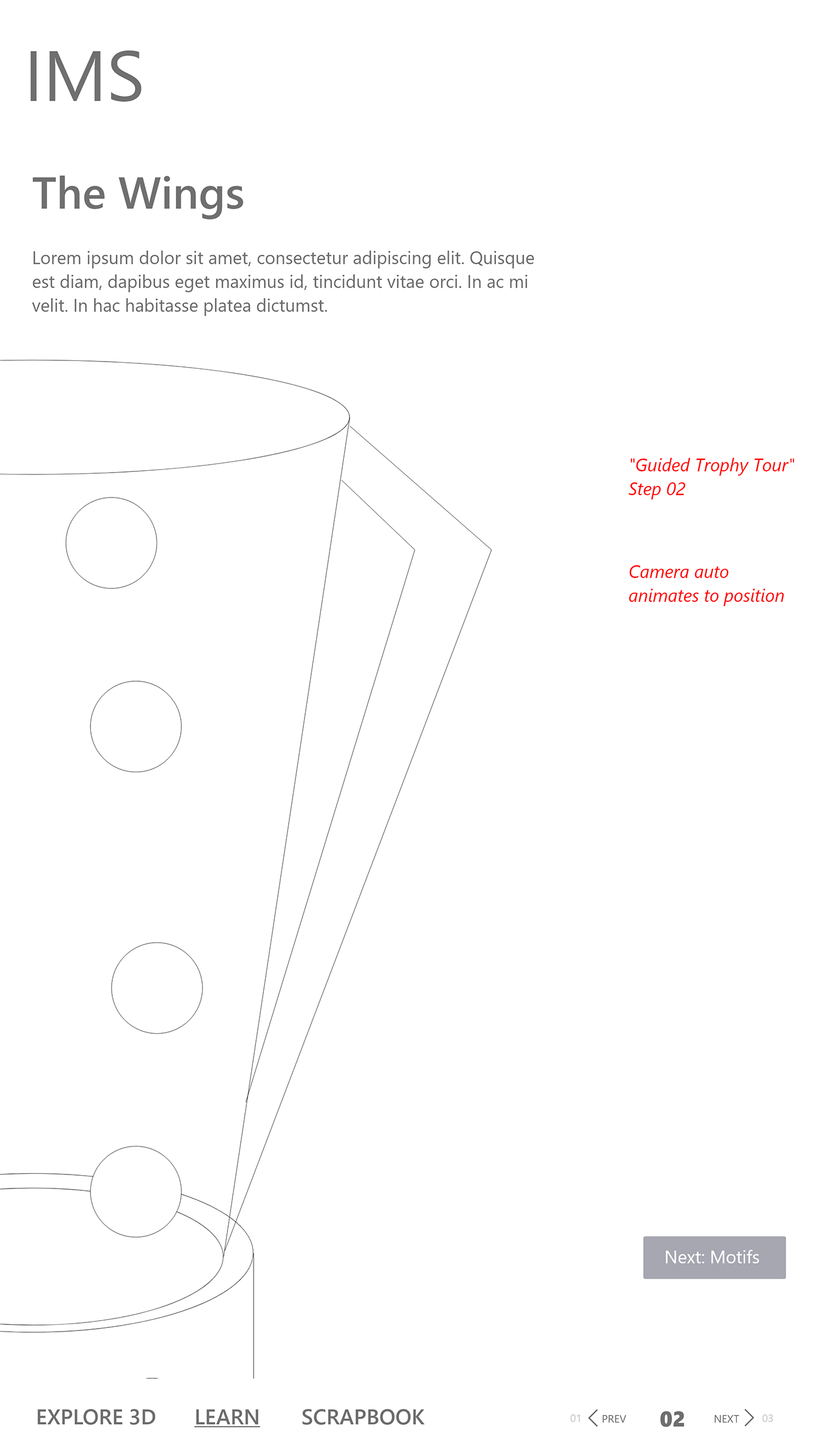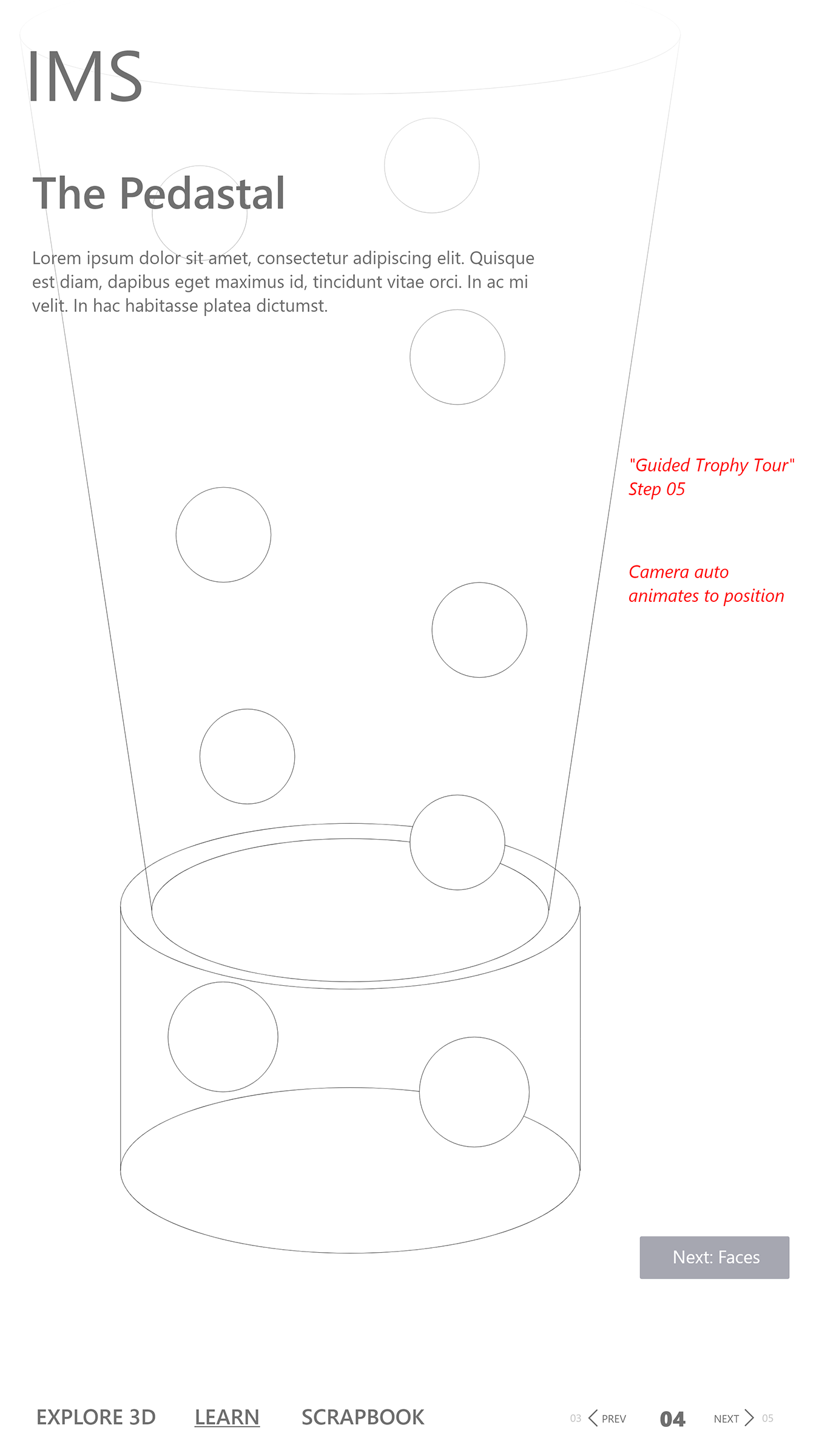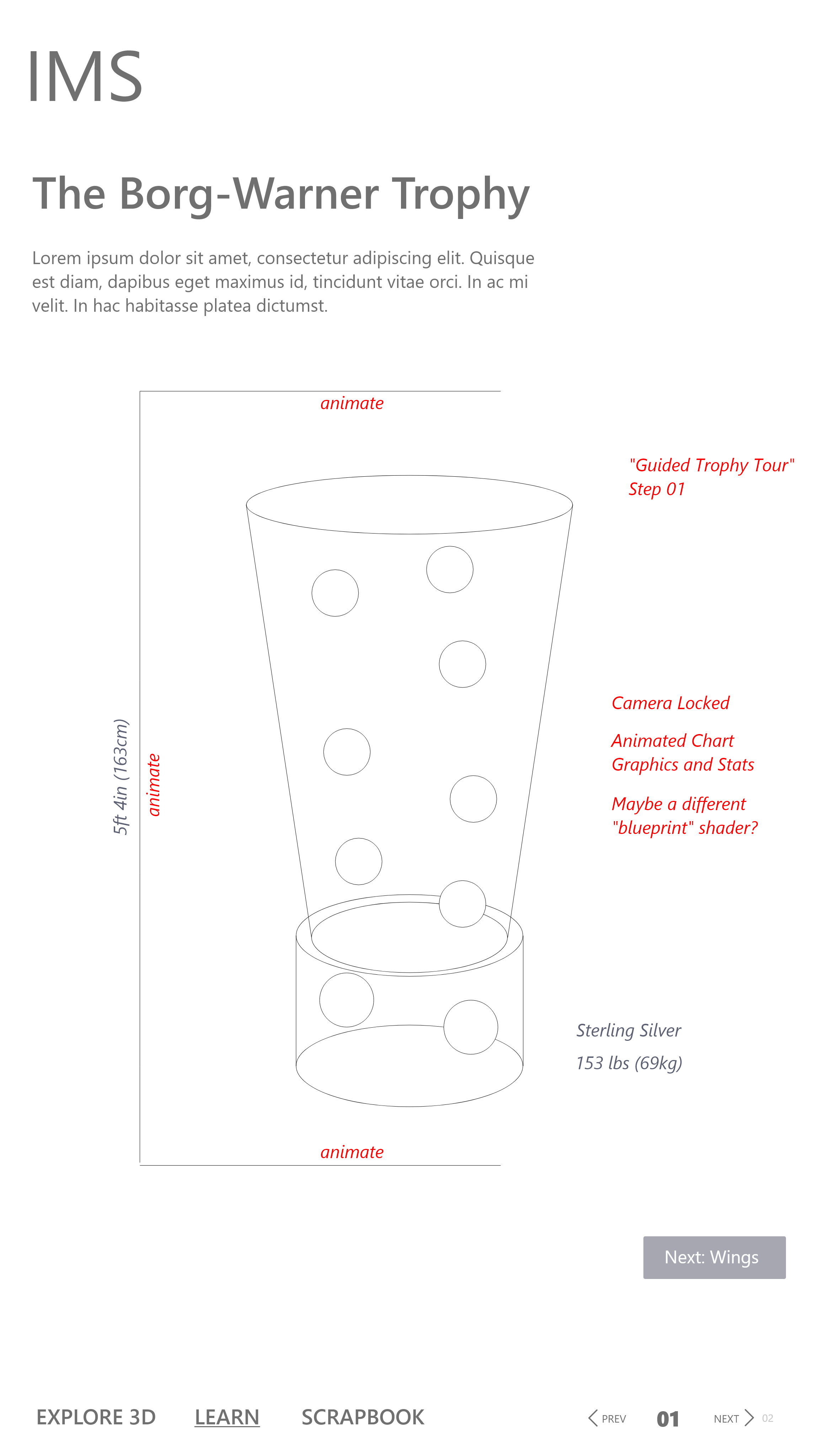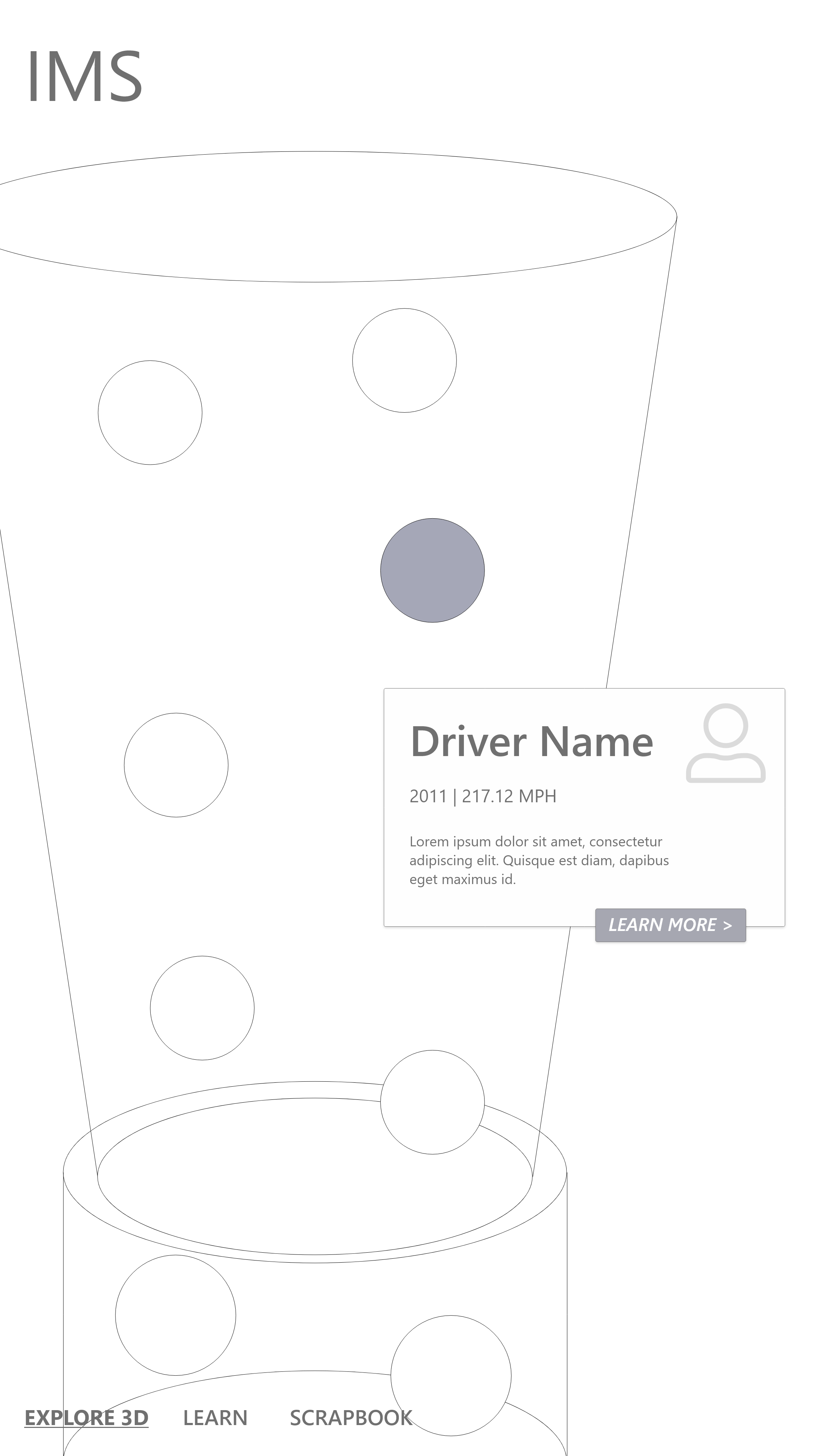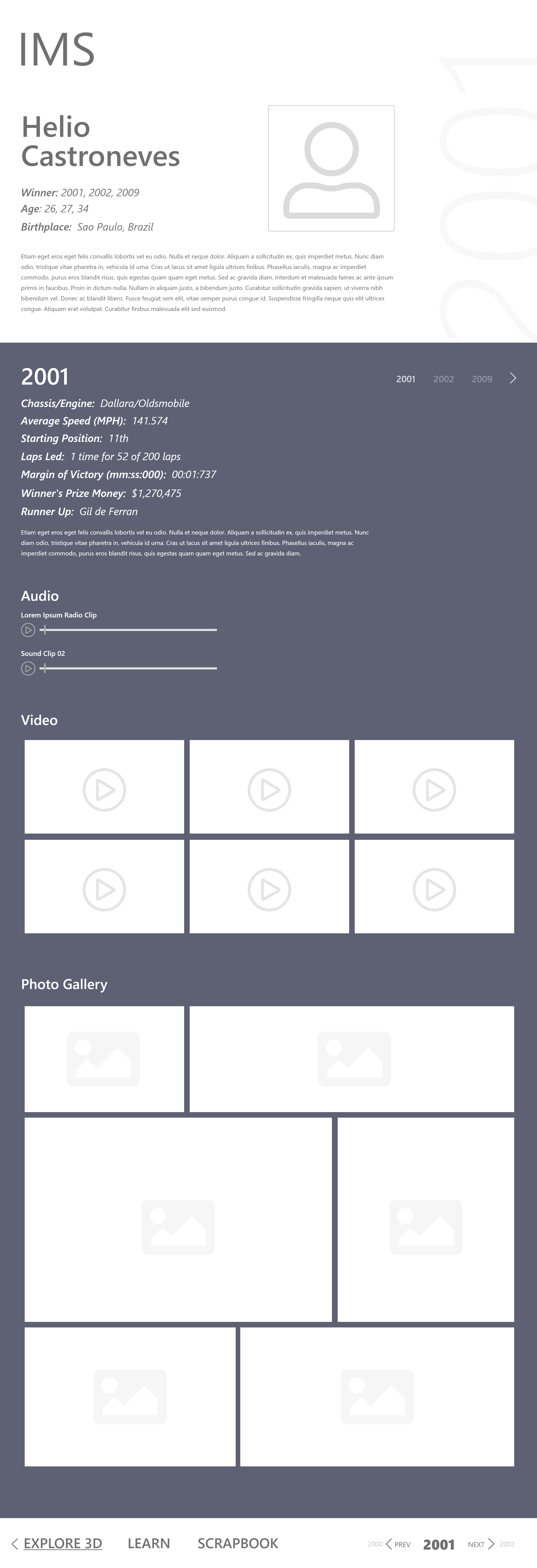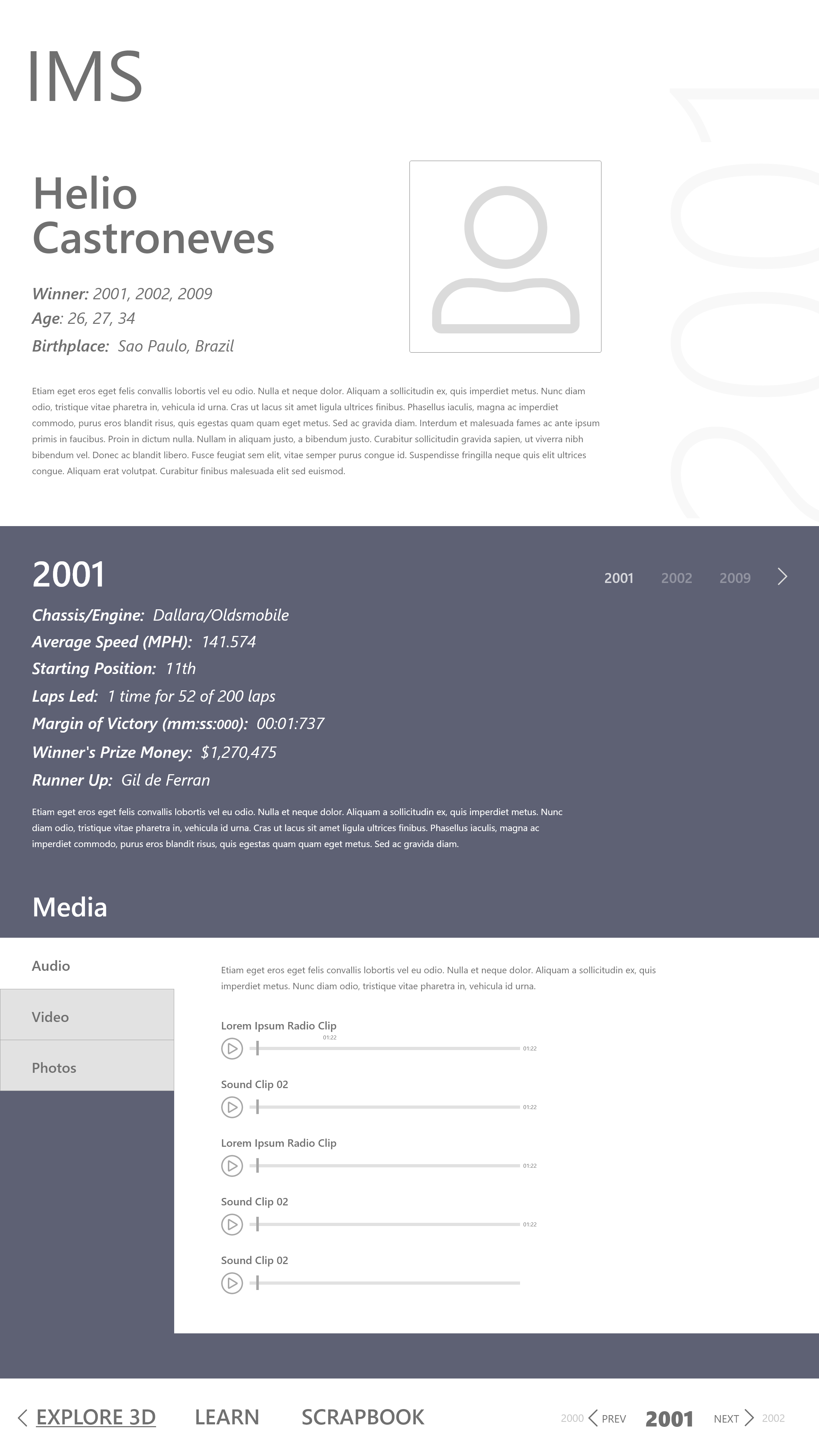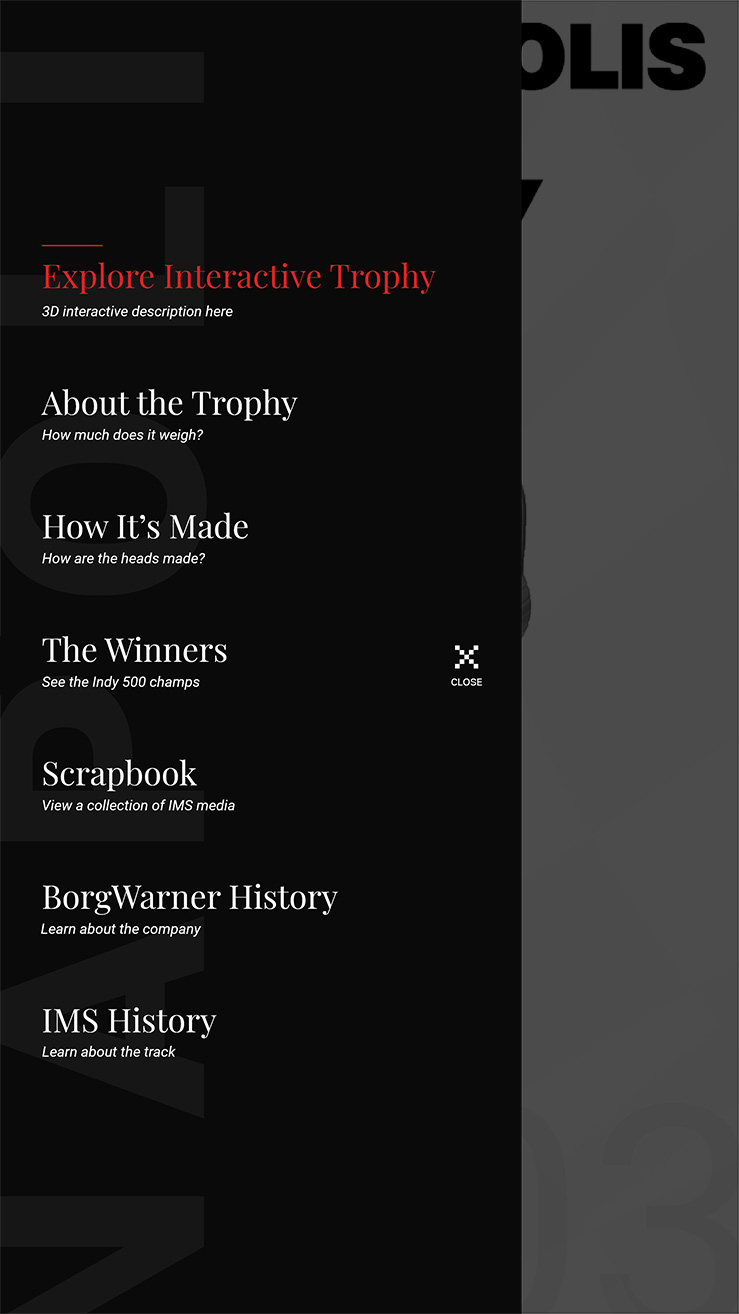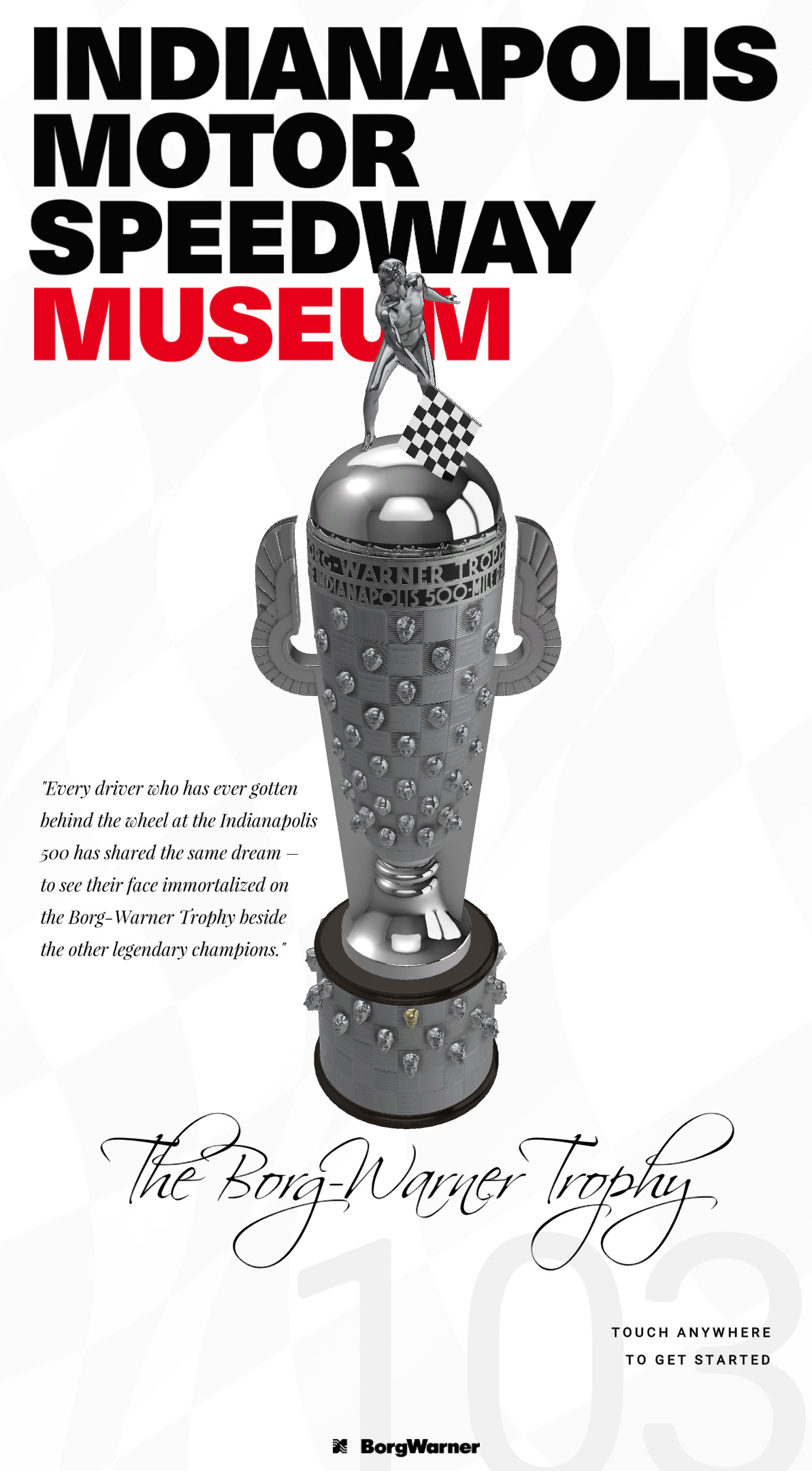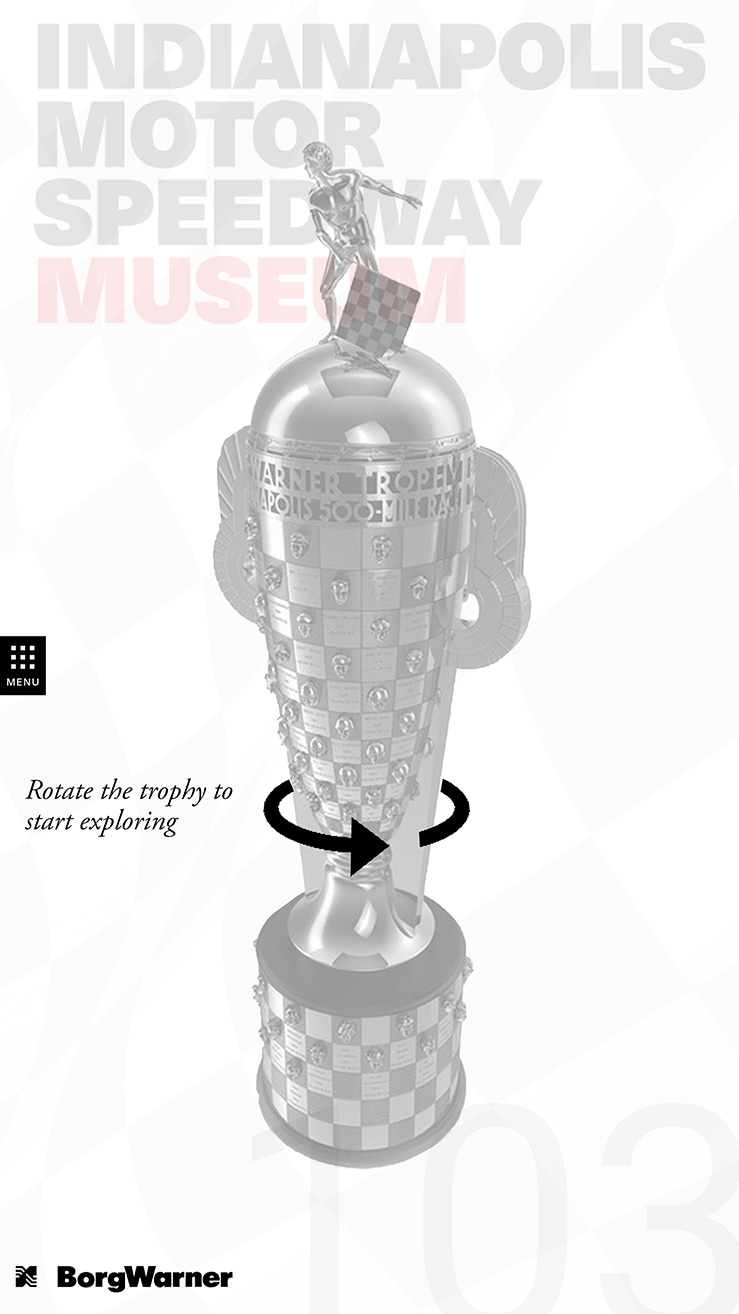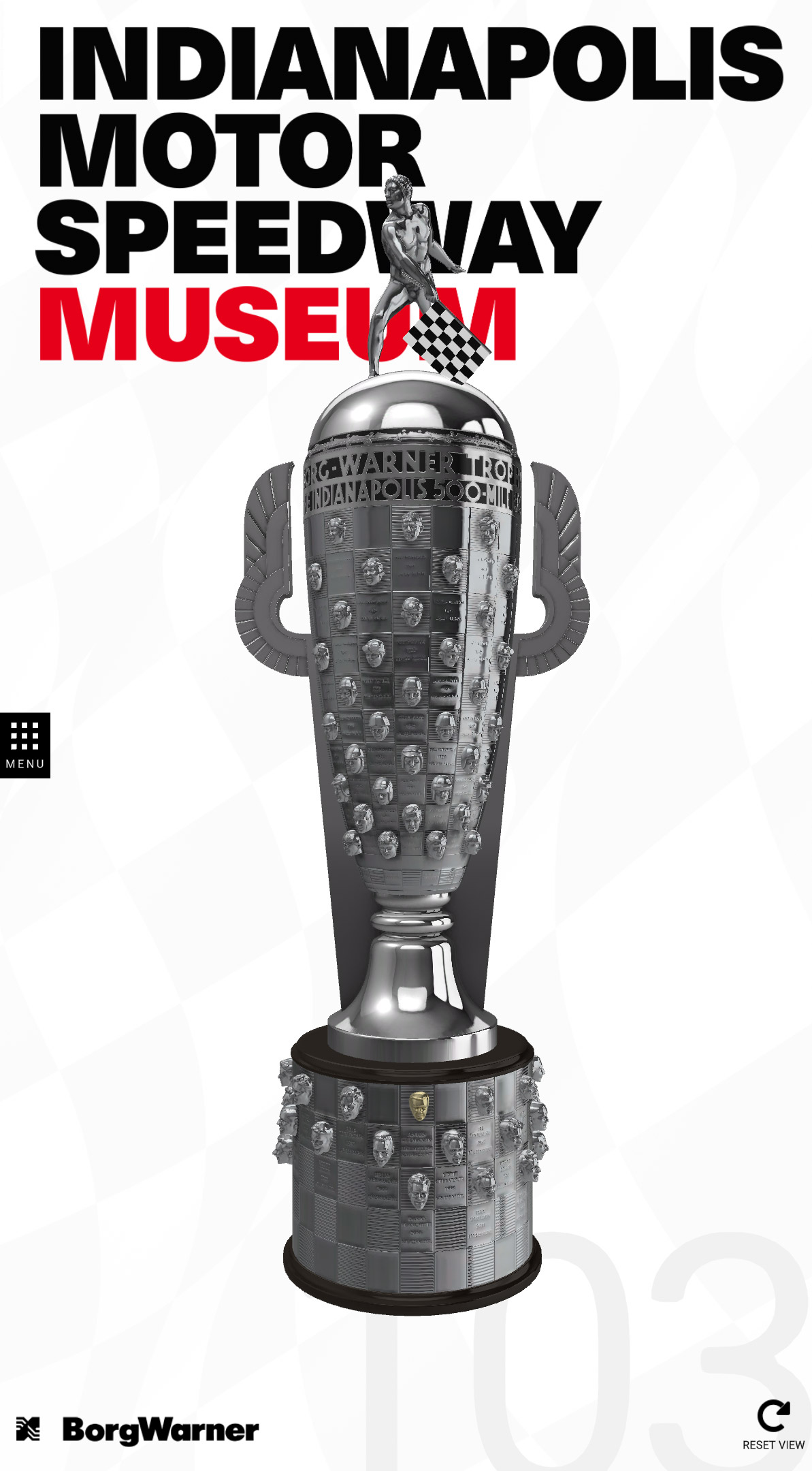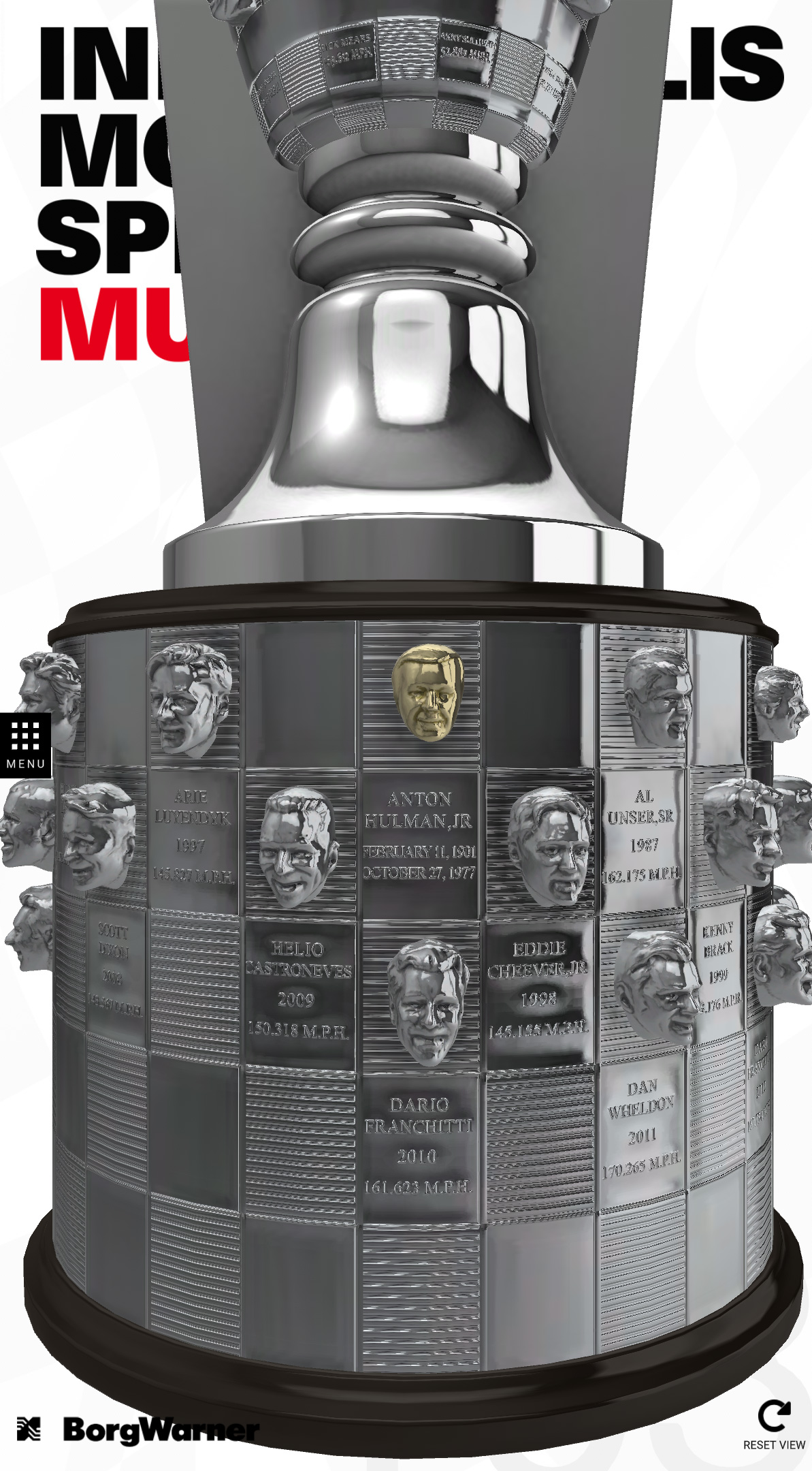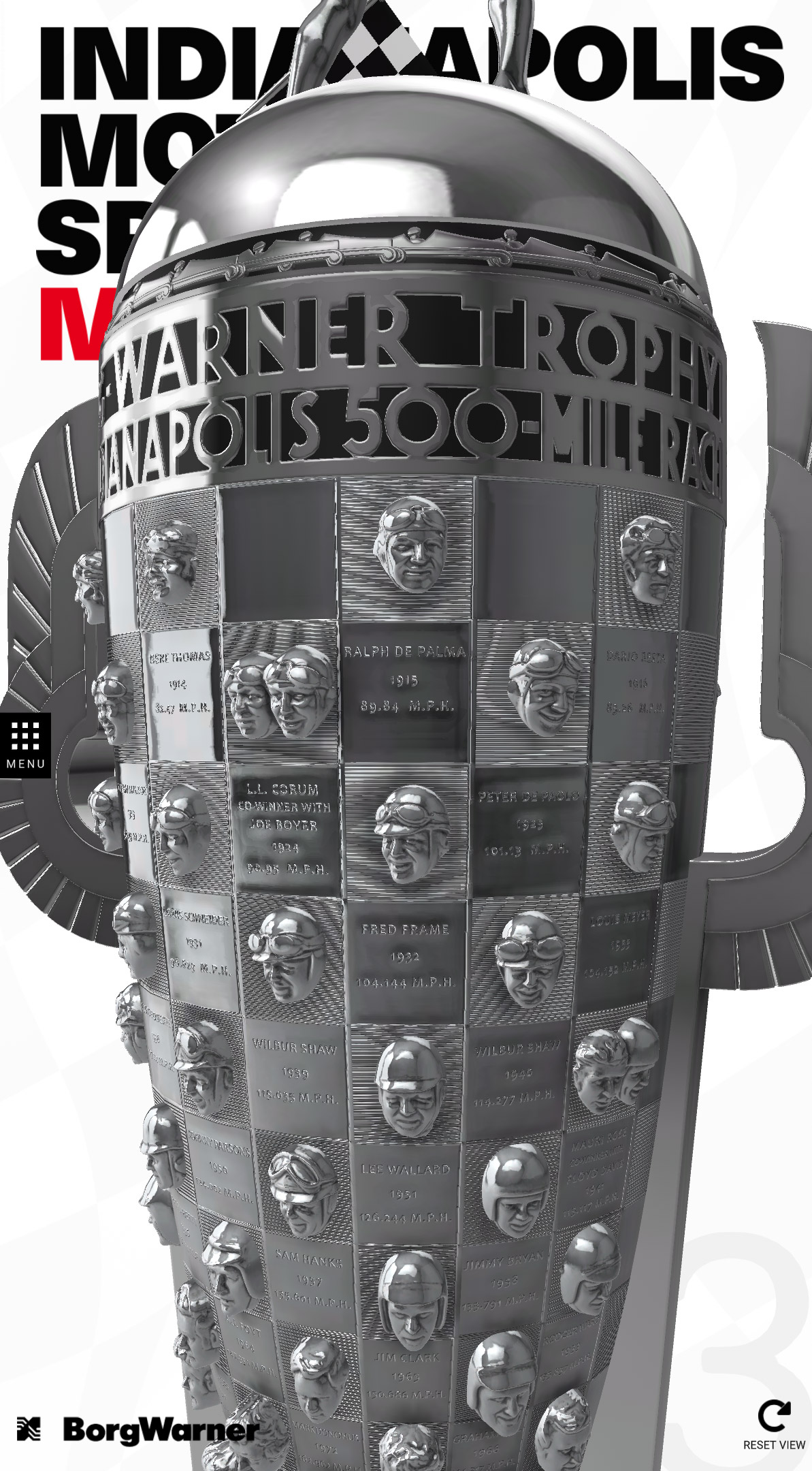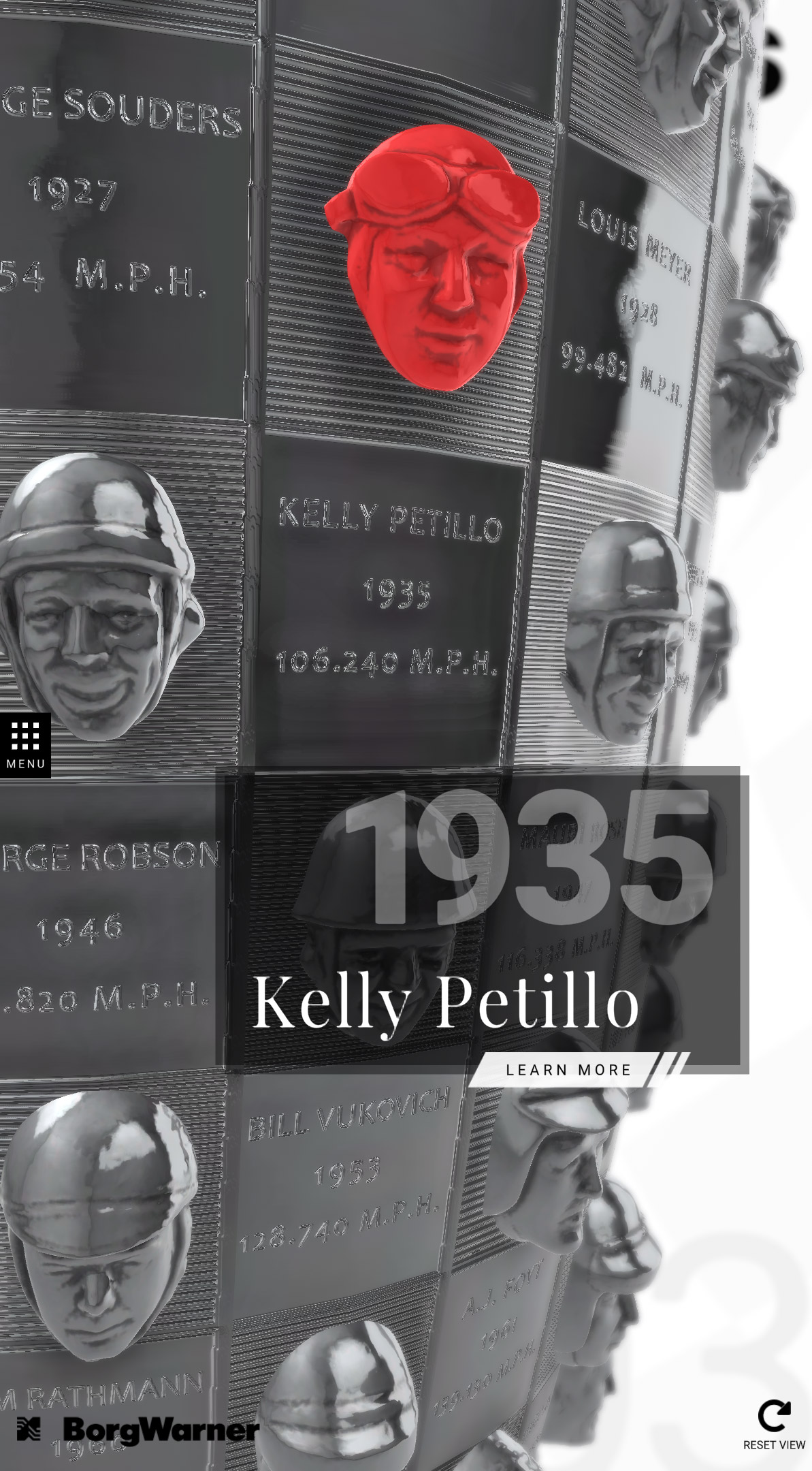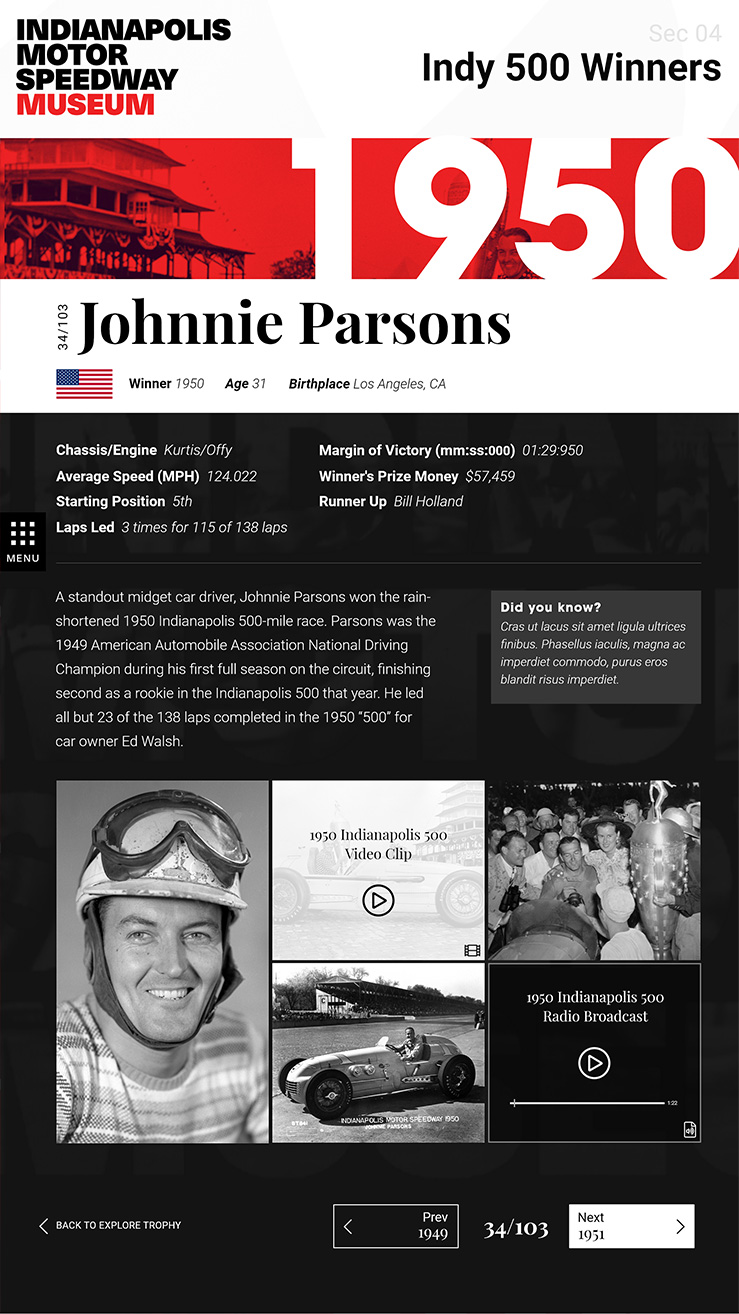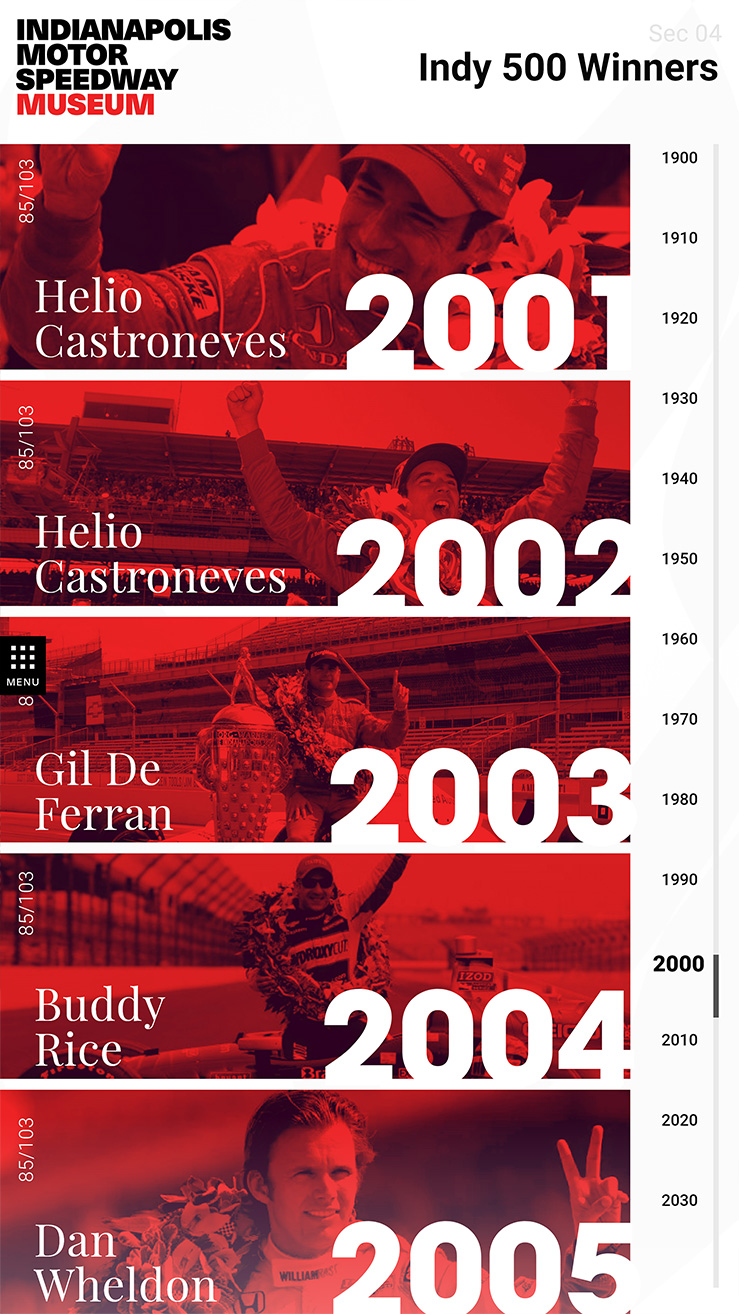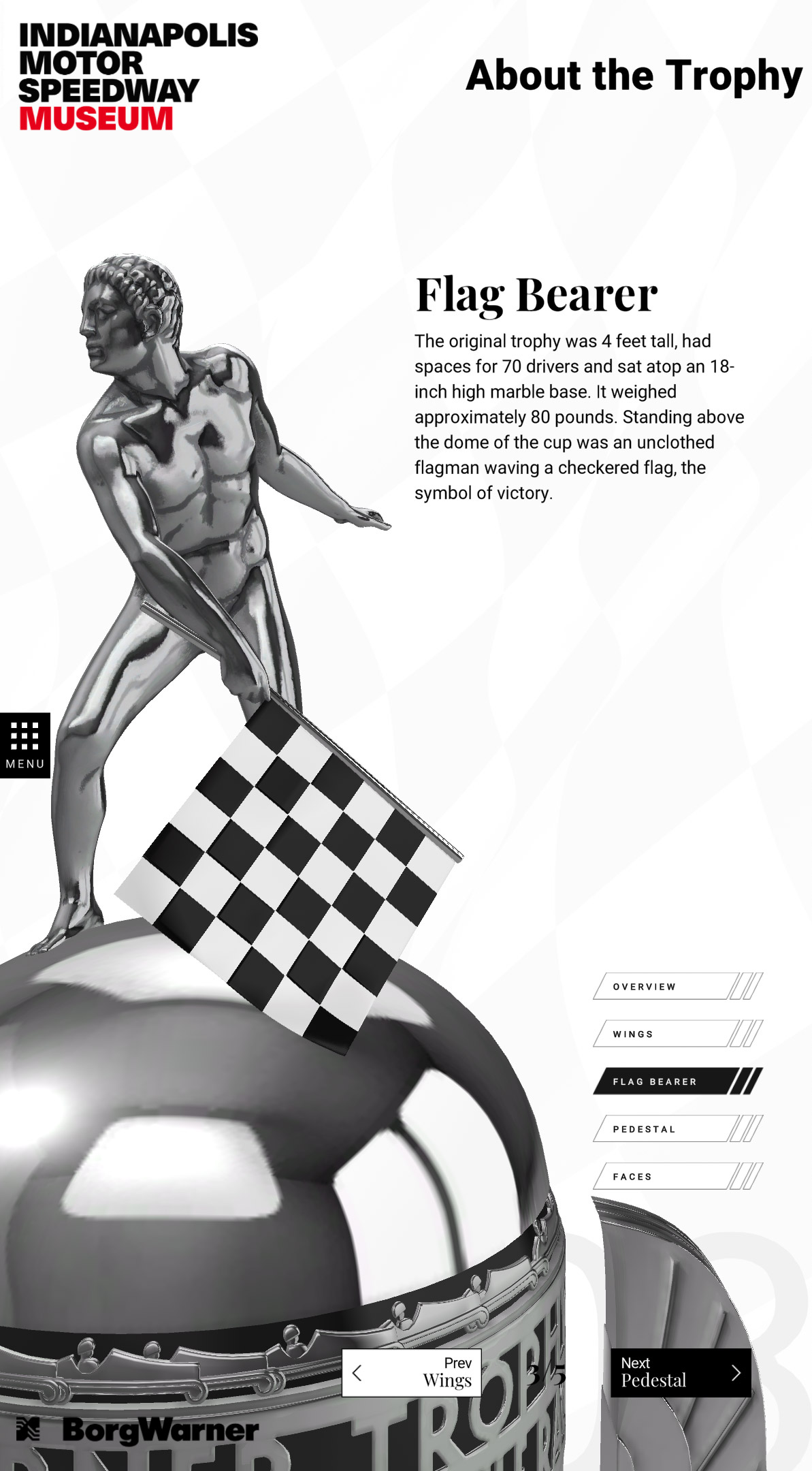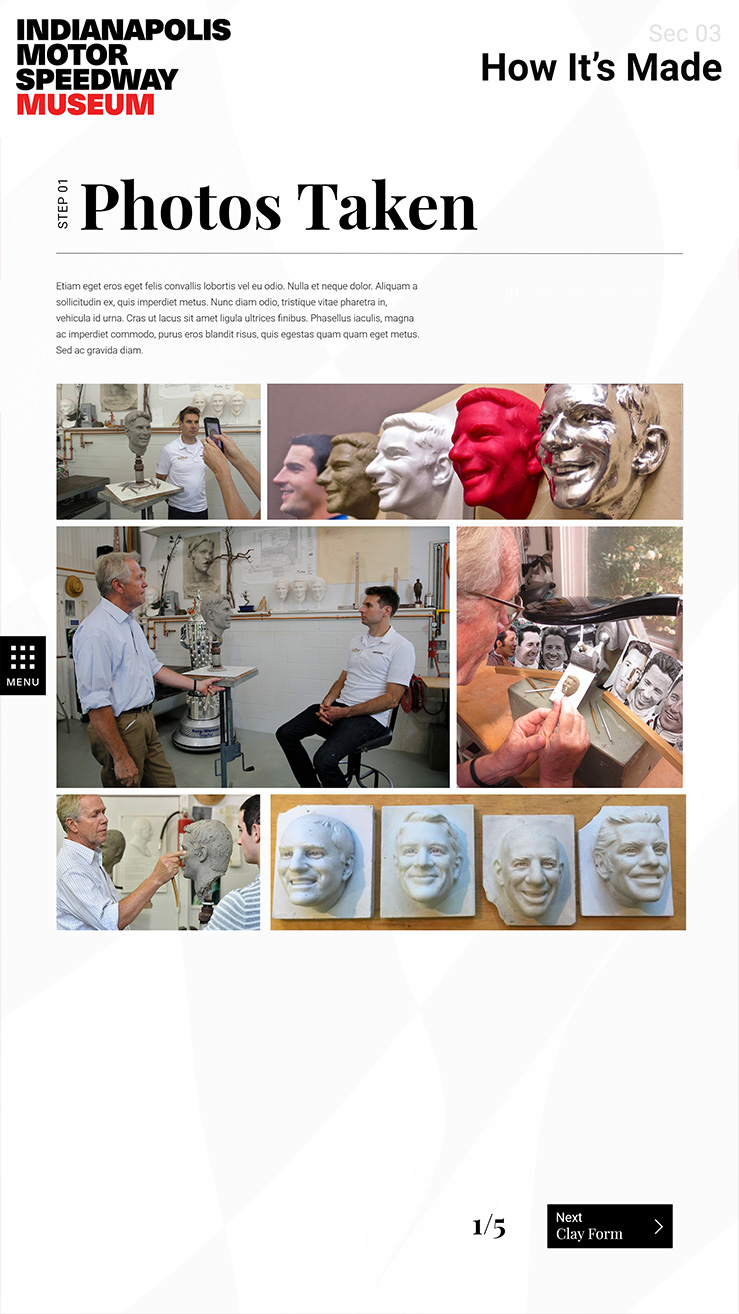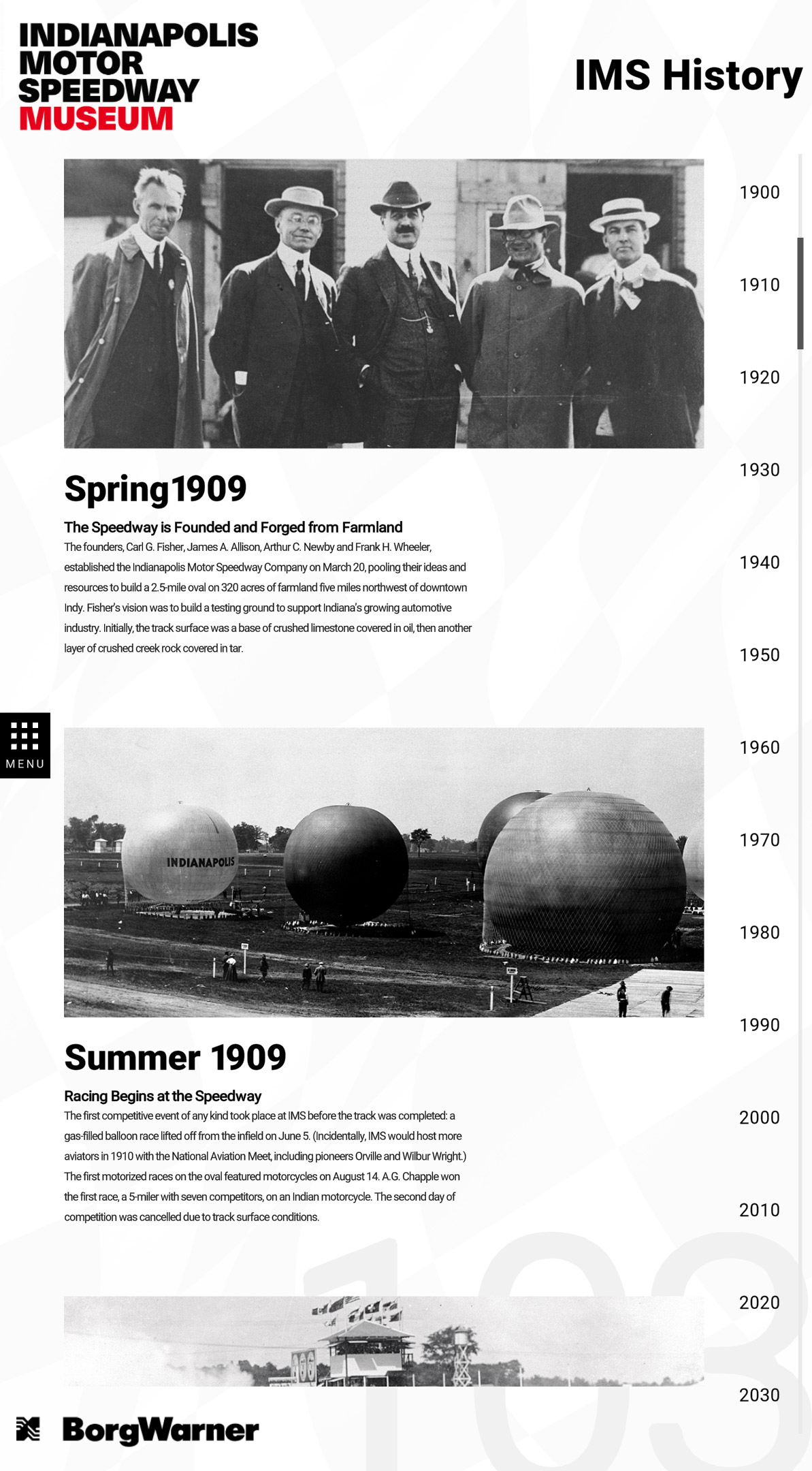Interactive Racing History
This exhibit invites fans to explore the iconic Borg-Warner Trophy and celebrate the history of the Indianapolis 500. Featuring a nearly full-scale 3D model of the trophy, users can access historic images, videos, and audio clips, learn about its craftsmanship, and uncover the rich legacy of this world-famous racetrack.
IMS Museum
-
Borg-Warner Trophy Interactive Exhibit
Role: UX/UI Design
Wireframe Design
The design process began with quick sketches to establish the flow and layout of the installation. These rough concepts helped visualize the user journey and allowed for early feedback and adjustments. Once the flow was mapped out, I developed detailed wireframes and interactive prototypes using Adobe XD.
The prototypes provided a clear framework for the design, ensuring consistency in both functionality and user experience. This approach enabled stakeholders to interact with the design early on, streamlining the transition to high-fidelity mockups and final development.
The design process began with quick sketches to establish the flow and layout of the installation. These rough concepts helped visualize the user journey and allowed for early feedback and adjustments. Once the flow was mapped out, I developed detailed wireframes and interactive prototypes using Adobe XD.
The prototypes provided a clear framework for the design, ensuring consistency in both functionality and user experience. This approach enabled stakeholders to interact with the design early on, streamlining the transition to high-fidelity mockups and final development.
Final UI Design
After refining the wireframes and incorporating stakeholder feedback, I moved on to creating the final high-fidelity designs. The goal was to deliver a visually engaging experience that aligned with the museum's brand while ensuring an intuitive user interface.
I focused on clean layouts, bold typography, and a dynamic use of color to highlight key interactive elements. Special attention was given to accessibility, ensuring the design could be easily navigated by a diverse audience.
After refining the wireframes and incorporating stakeholder feedback, I moved on to creating the final high-fidelity designs. The goal was to deliver a visually engaging experience that aligned with the museum's brand while ensuring an intuitive user interface.
I focused on clean layouts, bold typography, and a dynamic use of color to highlight key interactive elements. Special attention was given to accessibility, ensuring the design could be easily navigated by a diverse audience.
